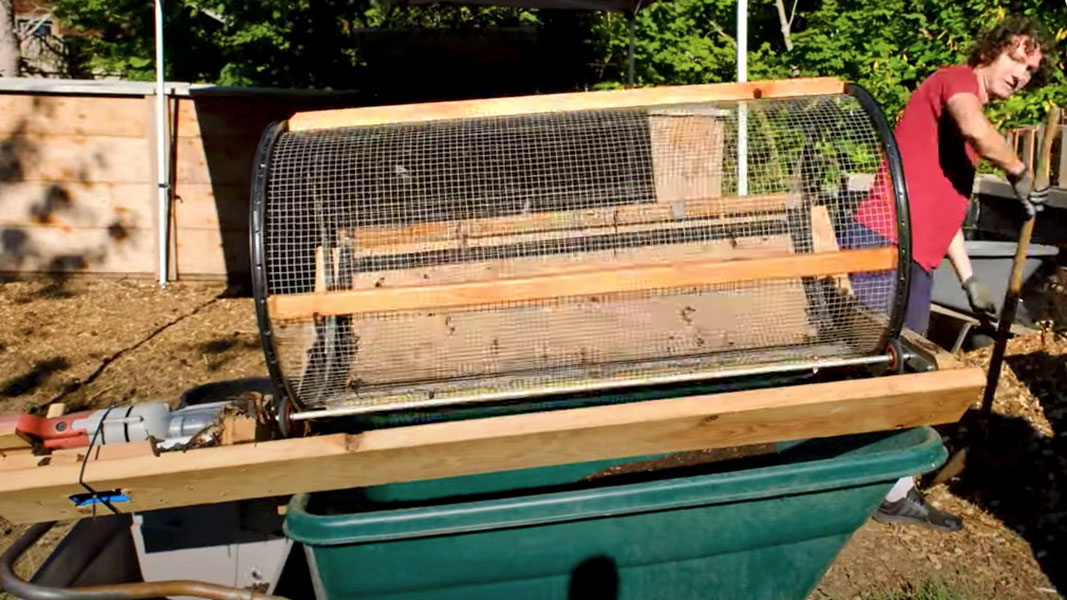Top: Trommel screen at Vashon Island Cohousing Compost Project is powered by a hand drill. Image courtesy Raintree Nursery
Small-scale community composters are known for their DIY (do-it-yourself) skills when it comes to building the various tools and equipment needed to collect and compost food scraps. From bike trailers to screens, innovation and DIY are baked into their DNA. Over the years, we have seen a variety of mini trommel screens powered by stationary bikes. The latest iteration we learned about from a long-time colleague and friend, Mark Musick, is a drill-powered trommel that screens compost made at the Vashon Island (Washington) Cohousing Compost Project. “The project is celebrating its fourth anniversary in June,” explained Musick in a recent email. “Vashon Cohousing generates about four tons of food scraps a year from our 18-home community. We worked with Peter Moon of O2 Compost to design a 3-bin, aerated static pile composting system, which also includes curing bins.”
Food scraps from Vashon Cohousing are collected once a week, and mixed with wood chips, horse manure and water before being loaded into a bin. A bin is filled every two weeks; active composting is done for one month before the material is moved to a curing bin for one month. The composting mix is aerated for 45 seconds every 30 minutes, says Musick in a video (above) he narrated about the composting project. The trommel screen (shown in the video) was fabricated using bike rims on each end that hold the drum in place. The screen is powered by a Milwaukee 7-amp half-inch drill (it also can be turned manually). The majority of finished compost is screened with a half-inch mesh, and used as mulch on the surface of Vashon Cohousing’s garden beds. When a finer compost is needed for incorporating into a garden bed or for transplanting, the half-inch product is further screened through a one-third-inch mesh. Wood chips in the screened overs can be used as a mulch or recycled back into the active composting bins. “I estimate we produce about one cubic yard a month of compost that yields several cubic feet a month of screened compost,” adds Musick.














